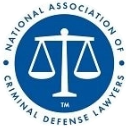Jones v. State (PD-0674, 0675, 0676-11). On Appellant’s petition for discretionary review from the First Court of Appeals (Galveston County), which affirmed the trial court. Opinion issued by Judge Keller, joined by Judges Price, Keasler, Hervey, and Cochran. Concurring opinion by Judge Price, joined by Judge Womack. Judge Meyers filed a dissenting opinion. Judge Johnson dissented. Judge Acala did not participate.
Mr. Jones was charged with three offenses after police searched his residence and found cocaine, codeine, ecstasy, and “various items that could be associated with drug trafficking.” Jones’ defense attorney filed a motion to suppress, arguing that the affidavit in support of the search warrant was flawed in that it “fails to show that the act or event upon which probable cause is based occurred within a reasonable time prior to making the affidavit.” The affidavit (among other things) said that the police had “recently” received information from a confidential informant that crack cocaine was being sold at the residence. They then investigated and conducted a controlled narcotics buy from the location (which field tested positive for cocaine). The affidavit then concluded by saying that the affiant believed Jones had a tendency to resist and evade arrest because of “past” arrests for evading and resisting in 2005 and 2007. The trial court denied the motion to suppress and Mr. Jones was found guilty at trial and sentenced to 99 years in prison. The Court of Appeals affirmed the conviction.
The CCA affirmed the conviction as well, holding that the affidavit in support of the warrant was sufficient. First, the use of the word “recently” mattered to the Court because it “led to the conclusion that the act or event relied upon as a basis for probable cause occurred within a reasonable time before the making of the affidavit.” Second, the affidavit stated that the controlled buy then occurred after the initial information from the confidential informant. Third, in general time is a less important consideration when the affidavit recites observations consistent with ongoing drug activity (if it was a one-time thing the probable cause fades with time, but on-going activity doesn’t fade so quickly). And fourth, by concluding with a statement about “past” arrests for evading and resisting in 2005 and 2007, the affiant showed how those happened before the tip from the confidential informant (since the affiant described the tip as “recent” and the arrests as “past”). So at the very least the magistrate could conclude that the tip occurred after the arrest in 2007. The bottom line here is that the Court concluded that the affidavit permitted the magistrate to infer a definite outer limit for when the events that gave rise to the probable cause took place. And although not precise or specific, setting an outer limit is evidently enough.
View All Blogs




